Mastering Shear Angle: The Key to Superior Machining Results
Are you plagued by rough cuts and imprecise machining outcomes? Frequently, this stems from neglecting the shear angle, a pivotal element in achieving smooth and efficient cuts.
The shear angle plays a significant role in determining machining precision, tool life, and energy efficiency. Optimizing the shear angle can significantly reduce material deformation and cutting resistance, thereby enhancing productivity. Let’s dive deeper into why this aspect is so vital in machining processes.
What is Shear Angle?
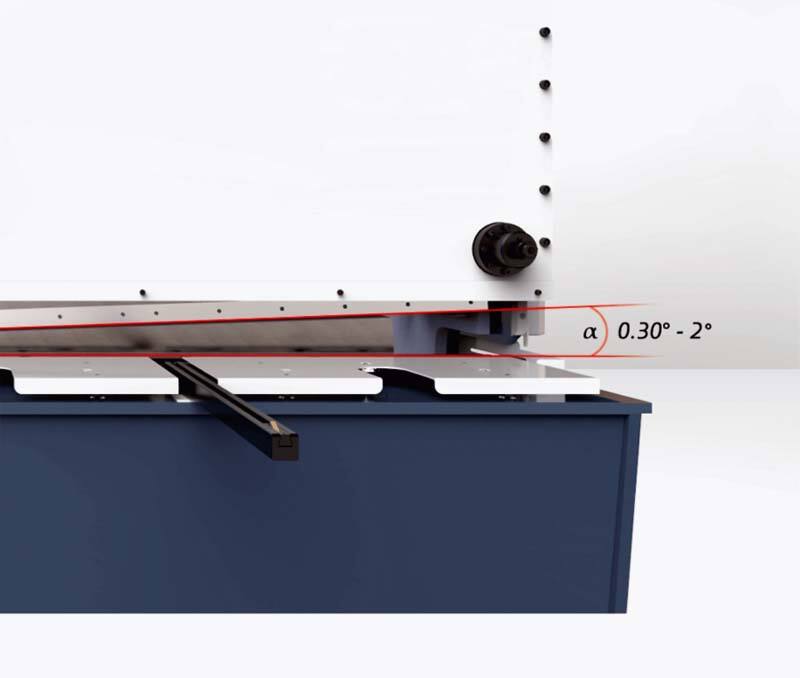
The shear angle is defined as the angle between the shear plane and the cutting direction during a machining process, such as turning, milling, or shearing. It determines how the material is sheared away from the workpiece by the cutting tool. An optimal shear angle minimizes cutting forces, reduces tool wear, and ensures a smooth surface finish.
Put simply, the shear angle is pivotal in machining as it dictates the efficiency of material deformation and detachment from the workpiece. It significantly affects chip formation and the energy expended in the machining process.
Key Benefits of Optimizing Shear Angle
Improved Precision
A well-calibrated shear angle ensures that the cutting process minimizes material deformation, resulting in smoother and more accurate cuts. Proper chip formation reduces irregularities on the machined surface, delivering a flawless finish. Precision is paramount in sectors such as aerospace and automotive, where even slight deviations can result in critical functional discrepancies. Optimizing the shear angle allows for tighter tolerances and consistent quality in production.
Reduced Tool Wear

When the shear angle is optimized, cutting resistance decreases significantly, which reduces the amount of heat and stress exerted on the cutting tool. This leads to slower wear and tear, extending the tool’s lifespan and reducing the frequency of tool replacements. As a result, businesses save on tooling costs while maintaining high-quality output. Moreover, a reduced risk of tool breakage ensures uninterrupted production, enhancing reliability and efficiency.
Enhanced Productivity
An optimized shear angle facilitates efficient chip removal, allowing for smoother cutting with less power consumption. This translates to faster machining cycles and increased output, which is critical in meeting tight production deadlines. Lower energy requirements also contribute to cost savings while supporting sustainable practices. By enhancing overall productivity, companies can achieve better profitability without compromising on quality.
Importance of Shear Angle in Machining
1. Impact on Cutting Force
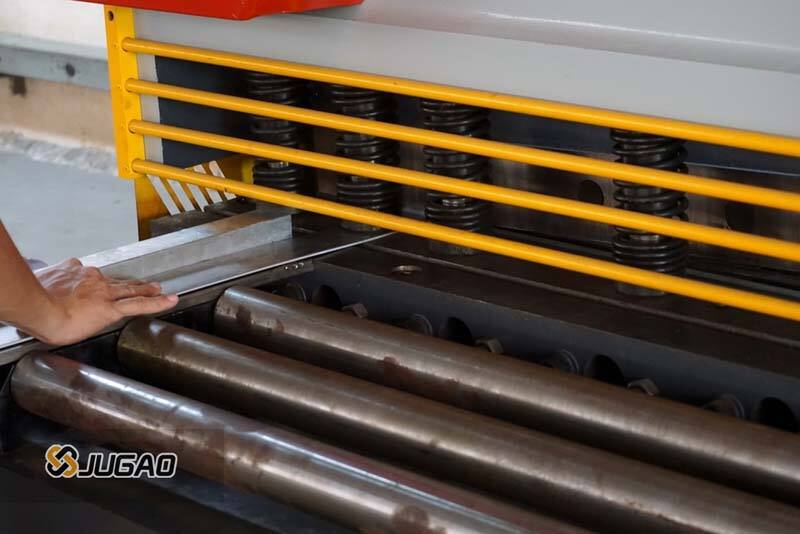
The shear angle directly influences the cutting forces experienced during machining. A higher shear angle reduces the cutting force required to remove material. When the shear angle is optimal, less energy is wasted in deforming the chip, resulting in lower power consumption and reduced wear on cutting tools.
2. Surface Finish Quality

Surface finish is a critical factor in many machining operations, particularly in precision-driven industries such as aerospace and automotive, where the quality of the surface finish directly impacts the performance and safety of the end product. An incorrect shear angle can lead to poor surface finishes, as surface integrity is significantly affected by machining parameters such as cutting speed, feed rate, and depth of cut, resulting in characteristics like roughness, chatter marks, and uneven textures.
3. Chip Formation
Chip formation is an integral aspect of machining. The shear angle dictates the type of chip produced—continuous, segmented, or discontinuous. Continuous chips, which are often preferred, are usually associated with a favorable shear angle. Discontinuous chips, on the other hand, may indicate poor shear angle settings and can damage both the tool and the workpiece.
4. Material Removal Efficiency
Efficient material removal is critical to achieving cost-effective machining operations. An optimal shear angle ensures that the material is removed with minimal energy wastage and heat generation, improving overall machining efficiency.
Factors Influencing Shear Angle
Several factors affect the shear angle in machining. Understanding these factors is essential for setting up machining processes effectively:
1. Material Properties

The type and hardness of the material being machined have a direct impact on the ideal shear angle. Harder materials, like stainless steel and titanium, generally necessitate sharper shear angles for effective cutting and minimizing deformation. Conversely, softer materials, such as aluminum and plastic, may permit wider shear angles. Additionally, material composition, grain structure, and brittleness can influence the choice of shear angle, making material-specific adjustments essential for optimal performance.
2. Cutting Tool Geometry
The rake and relief angles of the cutting tool are fundamental in determining the effectiveness of the shear angle.
· Rake Angle: A positive rake angle enhances chip flow, reduces cutting resistance, and minimizes tool wear. However, excessive rake can weaken the tool edge, particularly for harder materials.

· Relief Angle: This angle prevents the tool from rubbing against the workpiece, reducing friction and heat generation. Insufficient relief can lead to poor surface finish and accelerated tool wear.
Selecting tools with precise geometry suited to the material and cutting conditions ensures efficient cutting and longer tool life.
3. Cutting Speed and Feed Rate
The settings of the cutting speed and feed rate are vital in optimizing the shear angle’s performance.
· Cutting Speed: Higher cutting speeds can improve surface finish and reduce cutting forces but may increase heat generation. Adjusting speed based on material properties ensures a balance between productivity and tool durability.
· Feed Rate: A proper feed rate is crucial for maintaining efficient chip formation and avoiding excessive strain on the tool and workpiece. Too high a feed rate can result in poor surface finish and tool damage, while too low a rate may lead to inefficient material removal.
4.Machine Setup and Stability
The precision and stability of the machine also play a significant role. Any misalignment or vibration can disrupt the cutting process, rendering the shear angle less effective. Regular machine calibration, proper tool clamping, and stable workpiece positioning are essential to fully leverage the advantages of an optimized shear angle.
By addressing these factors, machinists can attain exceptional cutting performance, prolong tool lifespan, and boost overall productivity, ensuring consistently high-quality results.
How to Optimize Shear Angle in Machining
To achieve the ideal shear angle for a machining operation, manufacturers must consider the following best practices:
1. Select the Right Tools

Choosing the appropriate cutting tools is a fundamental step in optimizing the shear angle. Focus on the following factors:
· Rake Angles: Select tools with suitable rake angles based on the material being machined. For example, harder materials may require a tool with a sharper rake angle to cut efficiently.
· Coating and Material: Choose tools made of durable materials, such as carbide or high-speed steel, with advanced coatings to suit specific materials and reduce friction.
· Specialized Tools: For unique applications, consider custom-designed tools tailored to the specific requirements of your machining tasks.
2. Fine-Tune Machine Settings
The machine’s operating parameters directly influence the effectiveness of the shear angle. To achieve optimal cutting results, it is essential to adjust settings such as blade gap, shear angle, and cutting speed based on the material properties and desired cutting quality.
· Feed Rates: Set feed rates that balance efficient material removal with surface finish quality. A slower feed rate is often better for delicate or detailed machining, while higher rates can be used for bulk material removal.
· Cutting Speeds: Optimize cutting speeds to minimize heat generation and maximize cutting efficiency. Use slower speeds for harder materials to prevent excessive wear and faster speeds for softer materials to improve productivity.
· Depth of Cut: Ensure that the depth of cut is appropriate for the material and tool. Excessively deep cuts can stress the tool and compromise the shear angle’s effectiveness.
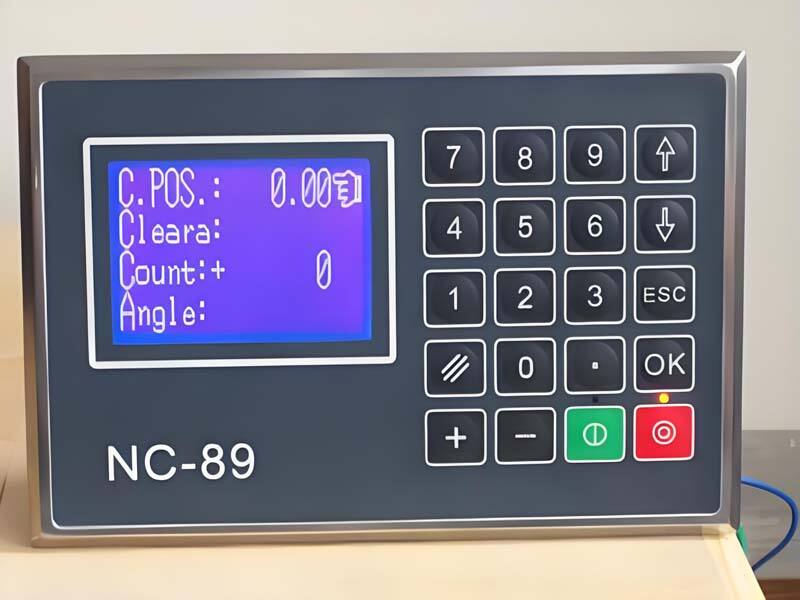
3. Invest in Advanced Equipment
High-quality, technologically advanced machinery plays a crucial role in optimizing the shear angle and achieving consistent results. Consider the following:
· Precision Machines: Machines like JUGAO’s press brakes and shearing machines offer precise control over cutting angles and other critical parameters, ensuring optimal performance.

· Automated Systems: CNC systems equipped with sophisticated software facilitate meticulous adjustments to shear angles, cutting speeds, and feed rates, which significantly diminishes human error and enhances the repeatability of manufacturing processes.
· Durable Construction: Machines featuring robust construction and stable platforms effectively minimize vibrations and misalignments, thereby preventing disruptions to the shear angle and maintaining cutting quality.
4. Maintain and Calibrate Equipment
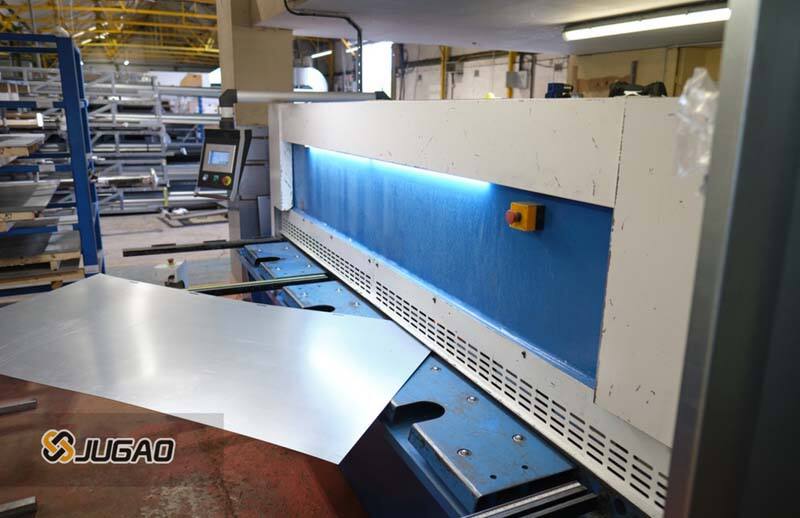
Proper maintenance and regular calibration are essential for ensuring machines operate at peak performance and deliver consistent results. Neglecting maintenance can lead to misaligned components, dull tools, and compromised shear angle settings, all of which impact machining precision and efficiency. Follow these steps to keep equipment in top condition:
· Professional Servicing: Periodically schedule servicing with qualified technicians to conduct thorough diagnostics and fine-tune machine performance. Professional maintenance can detect hidden issues and ensure all components function cohesively, extending the machine’s lifespan.
· Component Inspection: Machine parts such as spindles, cutting heads, and tool holders should be routinely inspected for wear, damage, or misalignment. Over time, continuous use and vibrations can cause small shifts that affect the overall performance. Identifying and addressing these issues early ensures smoother operations and prevents costly downtime.
· Scheduled Calibration: Regularly calibrate machine settings, including cutting speeds, feed rates, and tool positions. Calibration ensures that the shear angle remains optimized for the specific material and machining process, delivering consistent precision and reducing material waste.
· To ensure optimal performance and longevity of machinery, it is crucial to maintain moving parts with proper lubrication, as recommended by manufacturers like SKF, to reduce friction and prevent premature bearing failure. Regular cleaning is essential to remove debris and chips that can obstruct tool movement and interfere with alignment, as seen in the application of polymer plain bearings in thermo-forming packaging machinery. This practice aligns with best maintenance practices for dental instruments, which emphasize daily cleaning and regular maintenance to extend instrument lifespan and ensure smooth operations.
Case Study: Real-World Applications
1. Aerospace Industry

In aerospace manufacturing, precision is paramount. Components such as turbine blades, structural panels, and engine parts often require machining to extremely tight tolerances. Optimizing the shear angle during high-precision turning or milling ensures:
· Flawless Surface Finish: Components achieve mirror-like surfaces essential for reducing aerodynamic drag.
· Efficient Material Usage: Titanium and high-strength alloys are costly materials, and thus, the adoption of efficient chip formation techniques is crucial for minimizing waste and ensuring optimal material utilization.
For instance, in the production of aircraft fuselage panels, the shear angle is a critical factor that influences the quality of the sheared edges, ensuring they meet stringent safety and performance criteria.
2. Automotive Manufacturing

In the automotive industry, components such as engine blocks, suspension parts, and body panels rely on optimized machining processes to ensure performance and durability.
· High-Precision Turning: During the production of crankshafts and camshafts, precise shear angles help maintain consistent dimensions and surface finishes, enhancing the efficiency of moving parts.
· Sheet Metal Shearing: In automotive body panel cutting, the shear angle is crucial for achieving a clean cut edge, as it influences the formation of burrs. Proper shear angle optimization can significantly reduce burr formation, thereby minimizing the need for additional finishing operations. This ensures a perfect fit during assembly and maintains the structural integrity of the vehicle.
3. Sheet Metal Fabrication
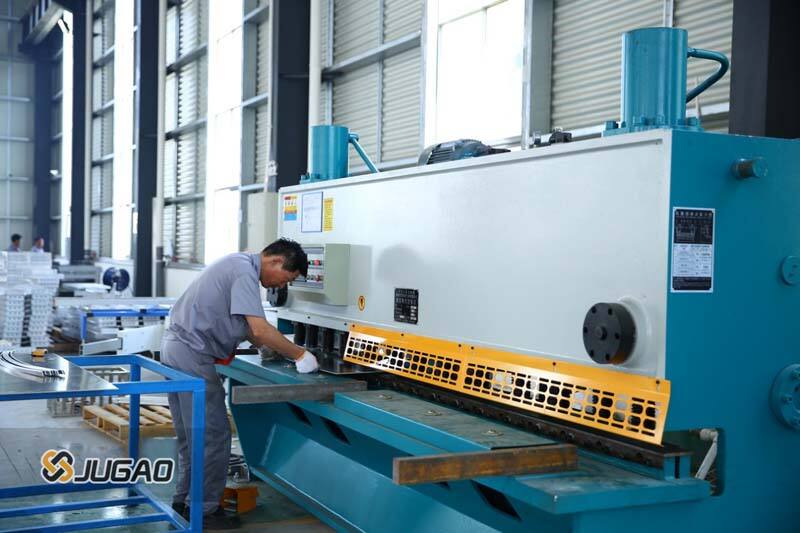
Across multiple industries, including construction, appliances, and industrial equipment, the shear angle is crucial in sheet metal fabrication.
· Clean Edges: By optimizing shear angles, edges become smoother and cleaner, enhancing assembly precision and diminishing the necessity for post-processing.
· Optimized Shear Angles: By employing appropriate shear angles, material distortion can be significantly reduced, which is essential for maintaining the quality of thin sheets where deformation could otherwise lead to compromised product integrity.
Conclusion
The shear angle is not just a technical term—it is a fundamental factor in determining machining efficiency, surface finish quality, tool wear, and overall productivity. By understanding and optimizing shear angle settings, manufacturers can achieve significant improvements in machining operations, reduce costs, and enhance product quality.
In summary, whether you’re working with a lathe, milling machine, or shearing equipment, the importance of the shear angle cannot be overstated. Mastering the principles of the shear angle is crucial for any machining professional striving for excellence in the realm of precision manufacturing.
Understanding the science behind the shear angle and applying it effectively will empower machining professionals to tackle challenges and deliver exceptional results in every operation. Investing time in optimizing the shear angle will always yield significant returns in machining efficiency and product quality.
About Gary Olson
Gary Olson is a skilled website editor at JUGAO CNC MACHINE, specializing in curating and organizing professional knowledge about sheet metal processing. His meticulous attention to detail and steadfast dedication to precision ensure the accuracy, engagement, and informativeness of all technical content. Gary Olson regularly updates the JUGAO website with invaluable industry insights, helping to educate and support customers and professionals in the metalworking field. His dedication to excelleHence, it plays a pivotal role in bolstering JUGAO's online presence and establishing it as a reputable authority in sheet metal solutions.View all posts by Gary Olson


















































